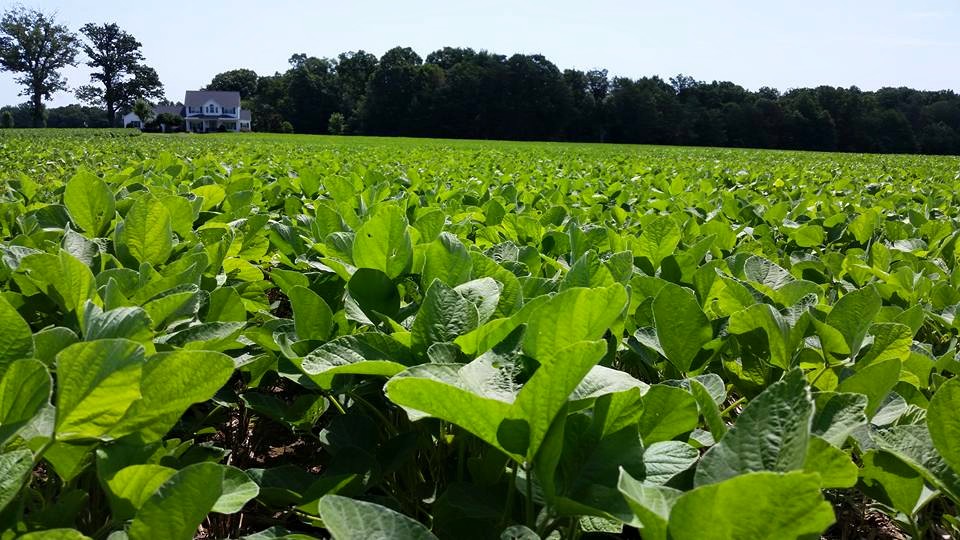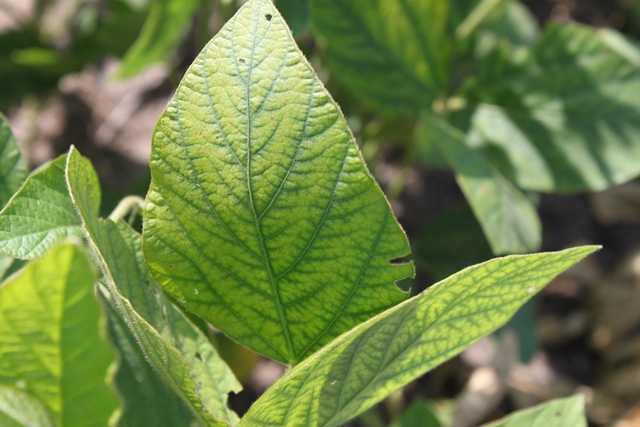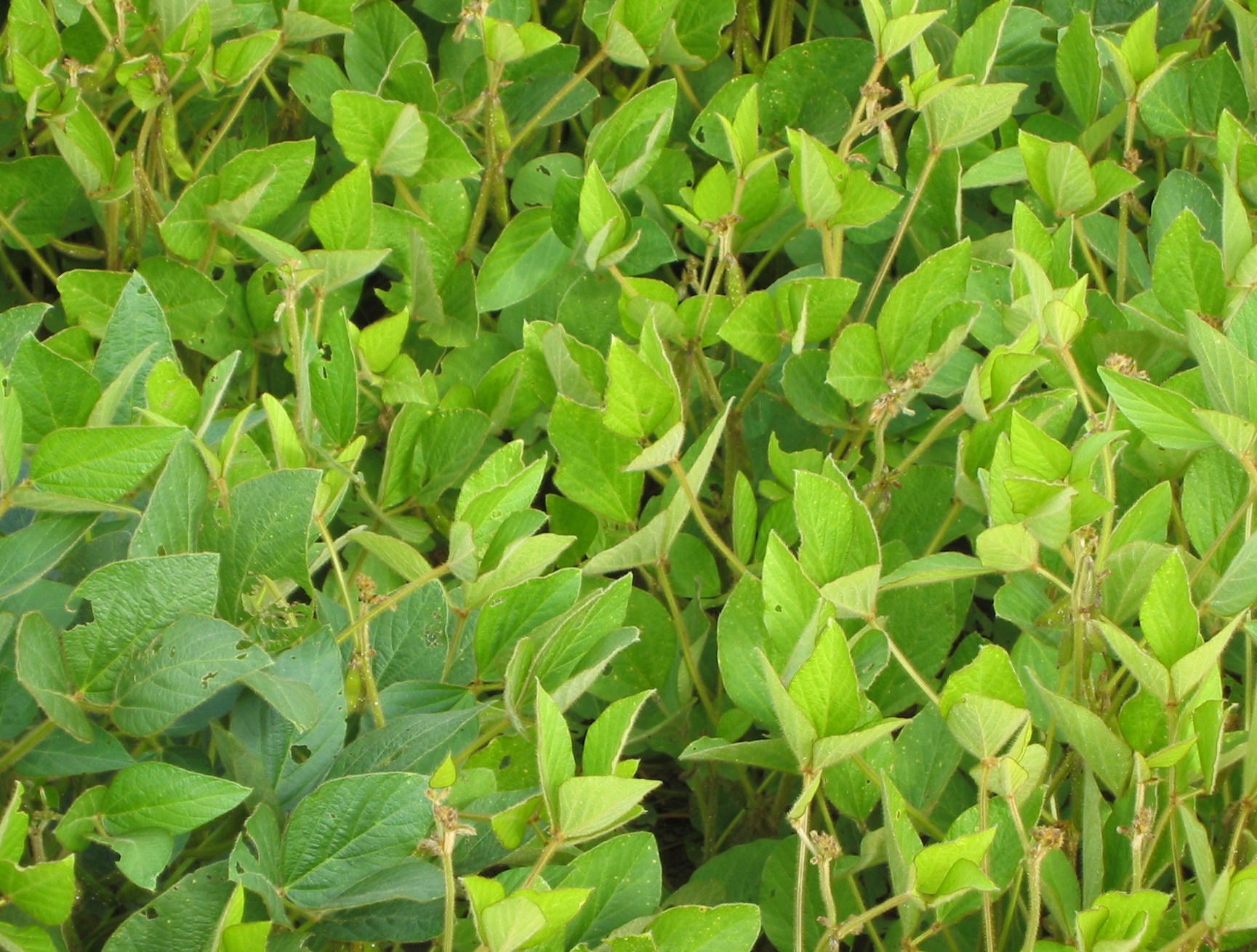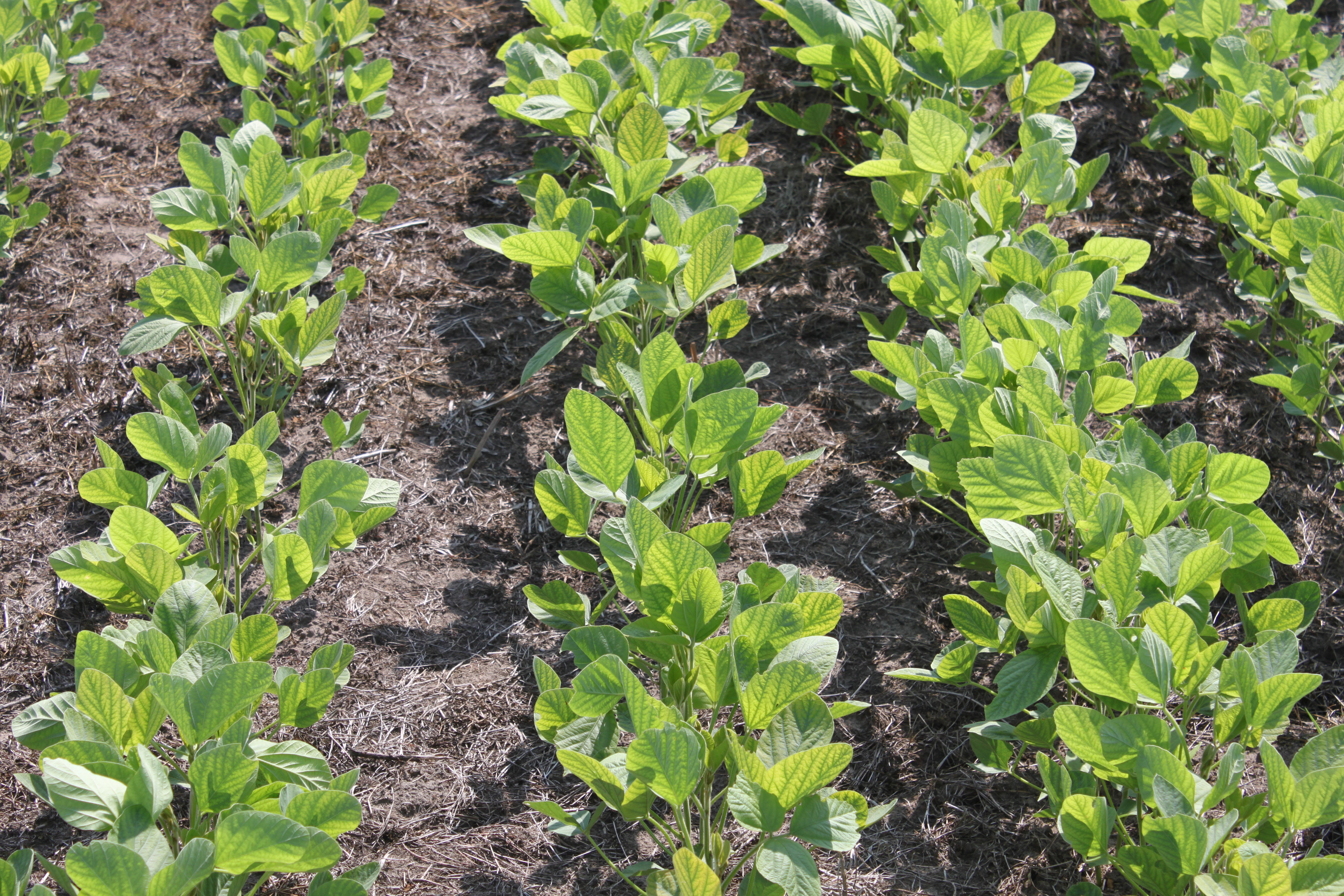Manganese (Mn) deficiencies are common in Virginia soybean and are starting to appear in numerous fields. These deficiencies are not necessarily due to low Mn levels in the soil, but are more likely related to high soil pH levels, as its availability decreases with increasing soil pH.
Although soils with a pH of 6.2 or lower can occasional show Mn deficiencies, it is most likely to appear when pH levels reach 6.5 or above. Furthermore, Mn deficiencies are more common on our sandier soils because pH changes more rapidly and these soils typically have a lower concentration of the nutrient.
The deficiency will appear as interveinal chlorosis, usually on the younger leaves first since Mn is not a mobile nutrient. 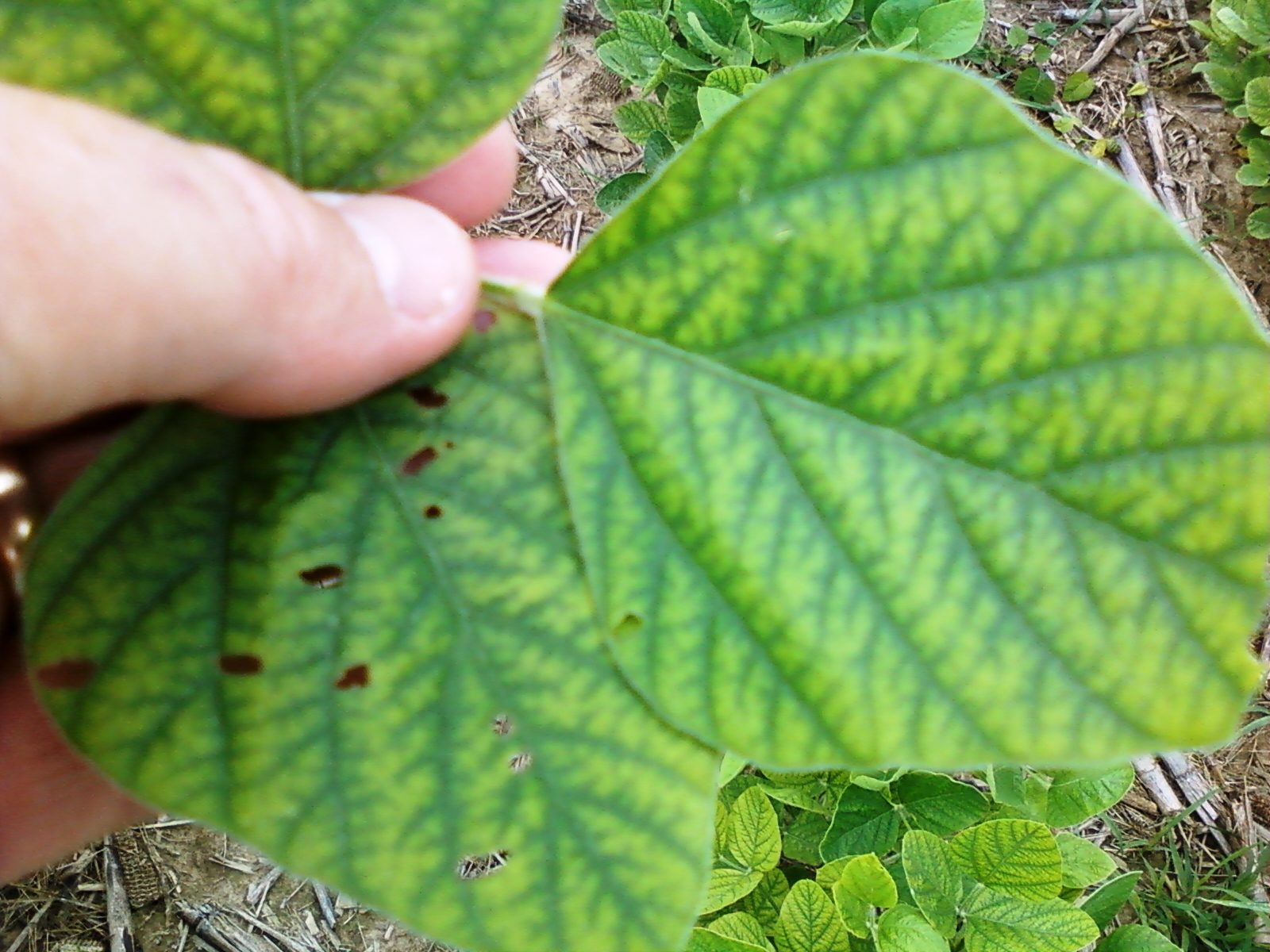 This may distinguish Mn deficiency from magnesium (Mg) deficiency. Magnesium deficiency symptoms will usually appear on the lower leaves while the upper leaves remain green. Still, I’ve seen Mn deficiency on the lower to middle leaves. This usually happens when the field has not been checked in a while and the observer missed the symptoms when they were on the younger leaves.
This may distinguish Mn deficiency from magnesium (Mg) deficiency. Magnesium deficiency symptoms will usually appear on the lower leaves while the upper leaves remain green. Still, I’ve seen Mn deficiency on the lower to middle leaves. This usually happens when the field has not been checked in a while and the observer missed the symptoms when they were on the younger leaves.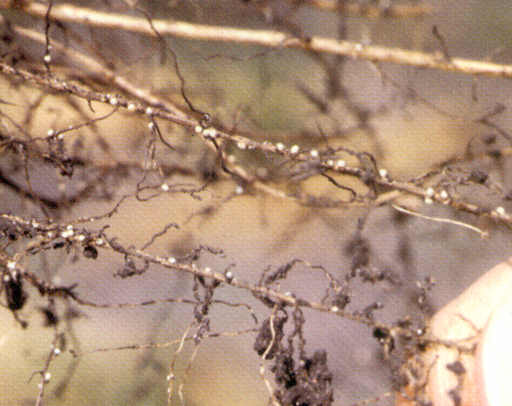
Other problems can cause look-alike symptoms similar to Mn deficiencies. In particular, interveinal yellowing is a common symptom of soybean cyst or other nematode damage. Therefore, it may be prudent to further investigate the problem, especially the root system.
Use the following guidelines for Mn applications:
Scout your fields. Mn deficiencies may or may not materialize. The only sure way to determine a deficiency is to observe the deficiency symptoms through visual observation or tissue tests. The characteristic visual symptom is yellowing between the veins on the new leaves. Mn is an immobile nutrient. Therefore, it will not move out of older leaves to the new leaves. Symptoms will appear when the plant can no longer extract sufficient amounts of the nutrient from the soil.
Take a tissue sample. If Mn deficiencies are suspected due to high pH and/or a field history of Mn deficiencies, but no symptoms have yet appeared, you should consider taking a tissue sample. Tissue samples can reveal deficiencies before symptoms appear (hidden hunger). We suggest a tissue test if lime, lime stabilized biosolids, or an ash product was recently applied.
Manganese application. To overcome a deficiency, apply ¾ lb. chelated Mn (elemental basis) or 1 lb. inorganic Mn (elemental basis) per acre to foliage upon appearance of symptoms and prior to flowering. More than one application may be required to correct a severe deficiency.
Don’t use low rates to correct a deficiency. Note that many Mn products recommend applying lower rates of Mn. However, the label usually states that these are maintenance rates. Once a deficiency occurs, these lower rates will not correct the deficiency and the rates stated above will be needed.
Split Mn application on deficiency-prone soils. An alternate method of application can be used before a deficiency is evident on soils that commonly show a deficiency, especially on soils that have a high pH (above 6.8 or so). A lower rate (~ ½ of that listed above) can be combined with another scheduled application, such as a postemergence herbicide or insecticide. This may be a sufficient rate to prevent a deficiency from occurring. But, continue to scout the field and take future corrective measures if visual deficiencies appear. If a visual symptom appears, you need to use the full rate. I will remind you that this is a preventative treatment. A deficiency may not occur. Furthermore, these are only maintenance rates and another application will likely be needed if the field is truly deficient.
Use EDTA chelated Mn formulations when mixing with glyphosate. Be reminded that some Mn formulations in combination with glyphosate herbicide (Roundup, Touchdown, many generics, etc.) will result in reduced weed control of certain weeds. Other herbicides have not shown to interact. If including Mn with glyphosate, use the EDTA chelated formulation as it has shown not to interact.
Don’t spray if you don’t need it. In addition to the cost, Mn can be toxic to soybean. Spraying greater than recommended rates or spraying as a preventative spray when soil pH is relatively low (5.7-5.9) could lead to toxicity problems

